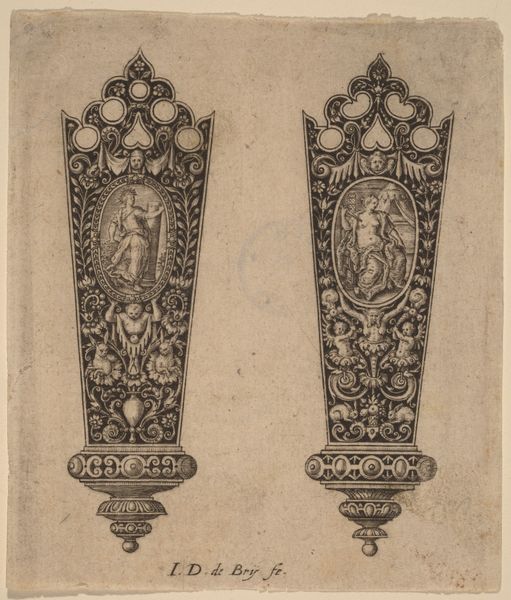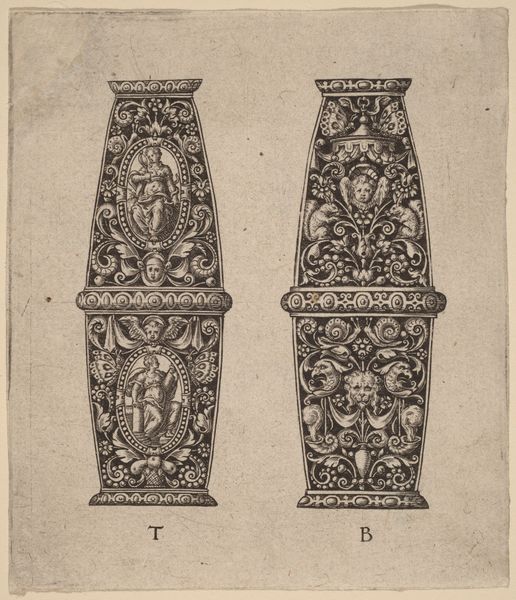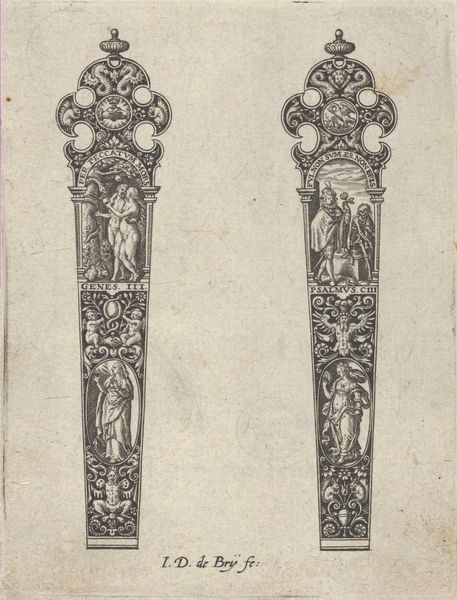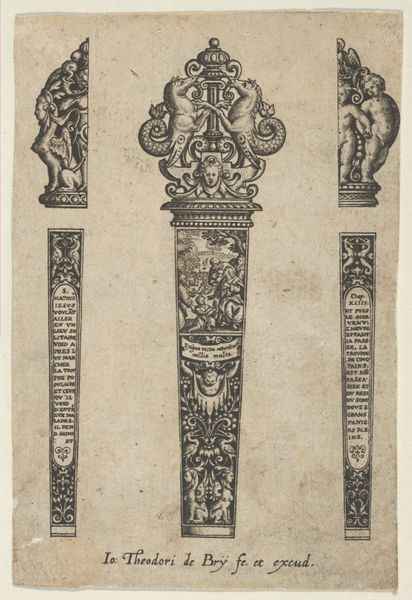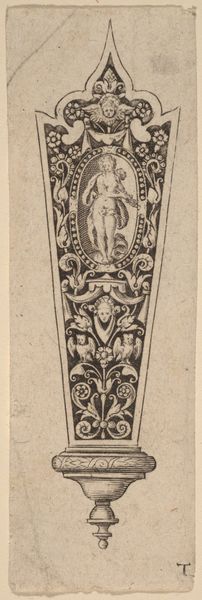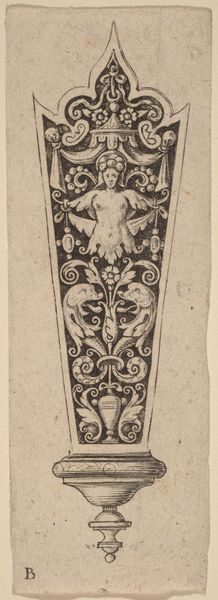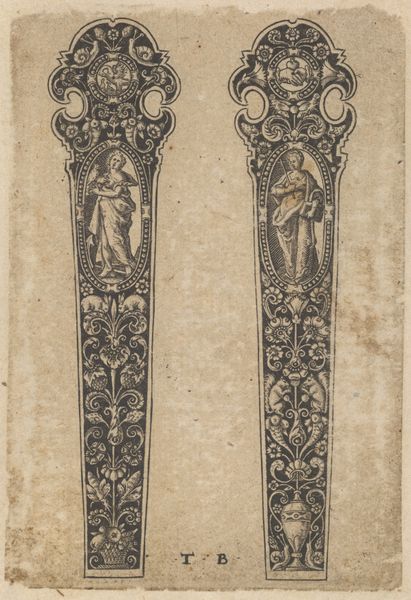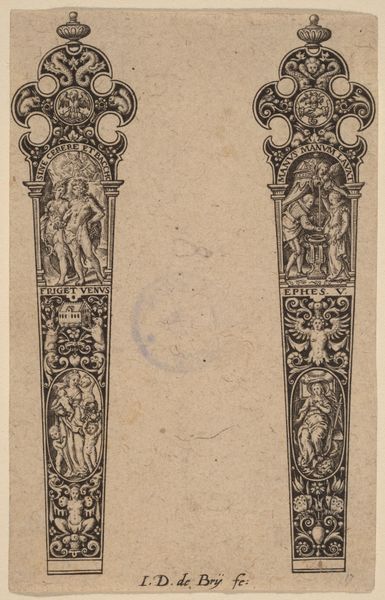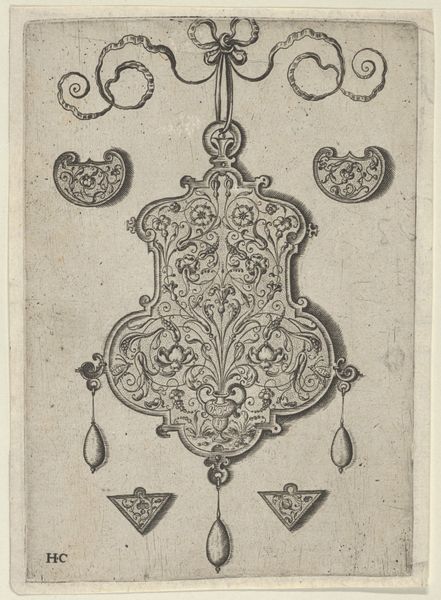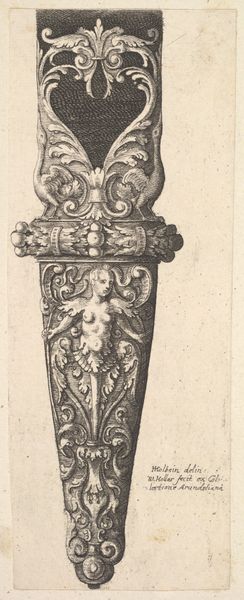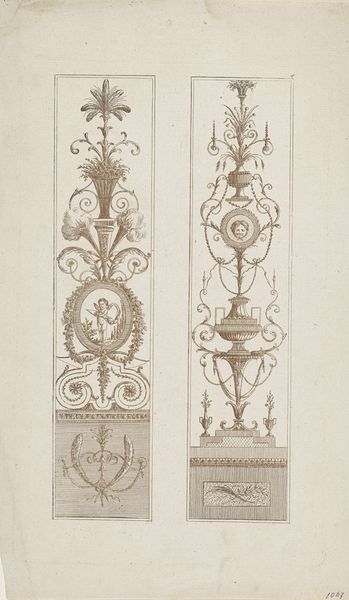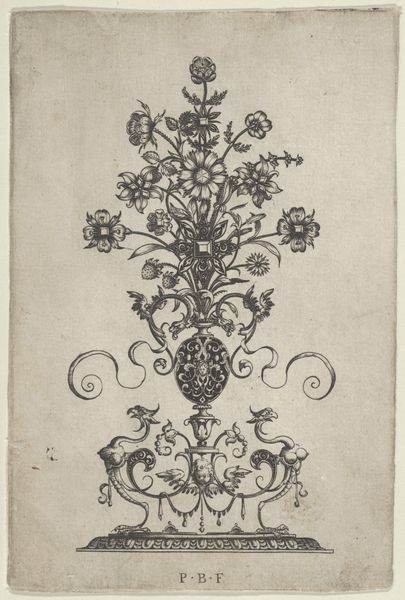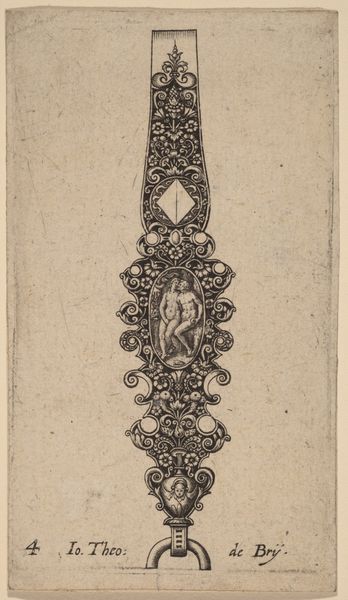
Design for Knife Handles with the Death of Lucretia and Grotesques 1580 - 1600
0:00
0:00
drawing, print, engraving
#
drawing
# print
#
pen sketch
#
figuration
#
11_renaissance
#
engraving
Dimensions: Sheet: 3 1/2 × 2 9/16 in. (8.9 × 6.5 cm)
Copyright: Public Domain
Editor: This engraving, "Design for Knife Handles with the Death of Lucretia and Grotesques" by Theodor de Bry, dates back to the late 16th century. It’s incredible how detailed the figures are on such a small scale, and for a utilitarian object like a knife. What strikes you when you look at this piece? Curator: The key here lies in understanding the socio-political forces at play during the late Renaissance. Engravings like these weren’t just decorative; they were potent vehicles for disseminating classical ideals and moral narratives within elite circles. Think about Lucretia, her suicide a powerful symbol of Republican virtue, and how that imagery functioned in a time of intense political and religious upheaval. Who controlled these images and their interpretation becomes the pertinent question. Editor: So the knife handle, just by virtue of its design, is making a statement about the owner's values? Curator: Precisely! These objects operated within complex social systems, signifying status, taste, and allegiance. The 'grotesques' you see intertwined with the figures? They’re not just whimsy; they reference a rediscovery of ancient Roman decorative motifs. This ‘rebirth’ of classical forms was tied directly to humanist ideals promoted by wealthy patrons who in turn validated their power. Editor: I hadn't considered the political implications of something like ornament! It seems like even everyday objects can carry significant cultural weight. Curator: Absolutely. Consider the intended audience and the social function of this knife. Was it for display, a functional object, or both? Its meaning shifts based on these contexts, right? Looking closer reveals the power dynamics embedded in Renaissance visual culture, moving us away from aesthetic appreciation and towards historical investigation. Editor: It's fascinating to think about the subtle but deliberate choices made in creating and distributing this design. It’s less about surface beauty and more about understanding its place in the social landscape. Curator: Indeed. And hopefully, it provides some understanding of how seemingly innocuous art serves to solidify historical power structures and belief systems.
Comments
No comments
Be the first to comment and join the conversation on the ultimate creative platform.
